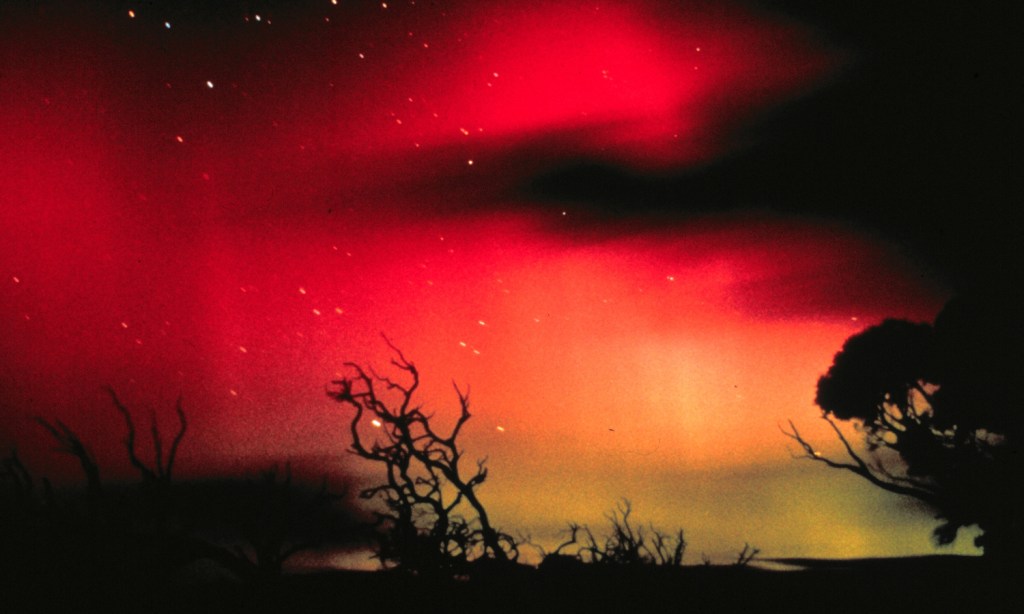Attention all stargazers and sky-watchers! If you’re tired of watching reruns of Friends and looking for a new light show to brighten up your nights, then you’re in luck. The Aurora Australis, the southern hemisphere’s version of the northern lights, has been gracing our southern skies with its colourful presence once again.
Dazzling displays of light have been reported in the early hours of the morning across Victoria, South Australia, and Western Australia. While the aurora is commonly seen in Tasmania, it’s rare that people on the mainland get to witness it. There have even been reports of lights in the sky seen as far north as Kiama and Dubbo in New South Wales.
Some amazing photos being posted to various Aurora groups on Facebook. Visible in NSW, images taken from #Kiama and #Dubbo at 5am. Severe G4 KP8 Geomagnetic Storm event.
#aurora #southernlights #AuroraAustralis #spaceweather #kp8 #geomagnetic pic.twitter.com/fwaHjwzC8P— scanSydney (@scanSydney) April 23, 2023
The Aurora Australis, also known as the southern lights, is a natural phenomenon that occurs in the southern hemisphere. It is a spectacular display of lights in the night sky, caused by particles from the sun colliding with gases in the Earth’s atmosphere. These collisions produce a variety of colours, including green, yellow, pink, and purple.
The Aurora Australis is similar to the Aurora Borealis, which occurs in the northern hemisphere. However, the Aurora Australis is less well-known because it is not as easily visible as its northern counterpart. It is best viewed from Antarctica, Southern Chile, Argentina, New Zealand, and other southern hemisphere locations during the winter months when the nights are longer.
After the past couple of years, we could all use a little more natural wonder and a little less screen time in our lives. So, get your blankets and your hot chocolate ready, folks, because it’s time to get cozy under the auroral glow.
Where to See the Southern Lights
The southern lights can often be seen in Australia during periods of high solar activity and when the skies are clear and dark. The best time to see the southern lights in Australia is during the winter months, from June to August, when the nights are longer and darker.
However, the visibility of the Aurora Australis also depends on the geomagnetic activity and weather conditions. This makes both March and September good due to the Earth’s orientation towards the sun at these times. It’s always a good idea to check the aurora forecast and find a location with minimal light pollution for the best viewing experience.
Some of the best places to see the southern lights in Australia include Tasmania, Victoria, and southern Western Australia. The further south you go, the greater your chances are of seeing the southern lights.
The southern tip of Tasmania, particularly the areas around Hobart and the Tasman Peninsula, is the best spot in the country for views of the southern lights. Given the next landmass after Tassie is Antarctica, it makes sense that this would be the country’s number one lookout.
View this post on Instagram
Wilsons Promontory National Park in Victoria is another great location, located at the southernmost point of mainland Australia. Its low light pollution makes it an ideal spot for stargazing and aurora watching. The Great Ocean Road in Victoria also offers a good chance of seeing the southern lights if the conditions are right.
The town of Esperance, in Western Australia, is located on the far south coast and has some of the darkest skies in the country, making it a perfect aurora-watching spot.
Various locations in South Australia, including the Eyre Peninsula and Flinders Ranges, also offer good chances of seeing the southern lights.
Aurora Australis Forecast
The southern lights happen all year round but they are difficult to predict with any degree of accuracy. These are basically the fallout from solar storms that happen at random. Some can come in long stretches, others in quick bursts.
The Bureau of Meteorology tracks space weather activity and sends out alerts when an aurora is likely to be seen in the night sky. You can sign up to those here. Typically, the BoM can predict three days ahead of when an aurora is likely to appear in the sky, although some will just appear with little to no warning.
The Southern Lights or #AuroraAustralis was visible on Saturday night during a minor solar storm and break in the cloud.
Subscribe on our website to access the Bureau's Aurora Alerts, Watches and Outlooks.
📷 by Rusli Hashim at Dolphin Sands, Tasmania Saturday night pic.twitter.com/yBkcIdMslF
— Bureau of Meteorology, Australia (@BOM_au) May 2, 2022
The BoM has said that anyone hoping to get a chance to catch the southern lights should get to a dark area, usually at around midnight, when geomagnetic storms are predicted. You can check the forecast of those here.
Soft Serve News, which mainly tracks Aurora Borealis activity, also offers a tailored alerts service for the Aurora Australis and is reliant on different data sources than the BoM.
In addition, there are also apps out there that claim to be able to alert you when an aurora is happening or about to happen but they have varying degrees of reliability. Still, it’s better to be out in the dark looking up at the night skies than on the sofa looking ahead at the night screen, even if you only get to witness the majesty of the Milky Way.
Related: A Hybrid Solar Eclipse Is Dropping in Australia Next Week
Related: Something in Deep Space Is Emitting Regular Radio Signals
Read more stories from The Latch and subscribe to our email newsletter.







